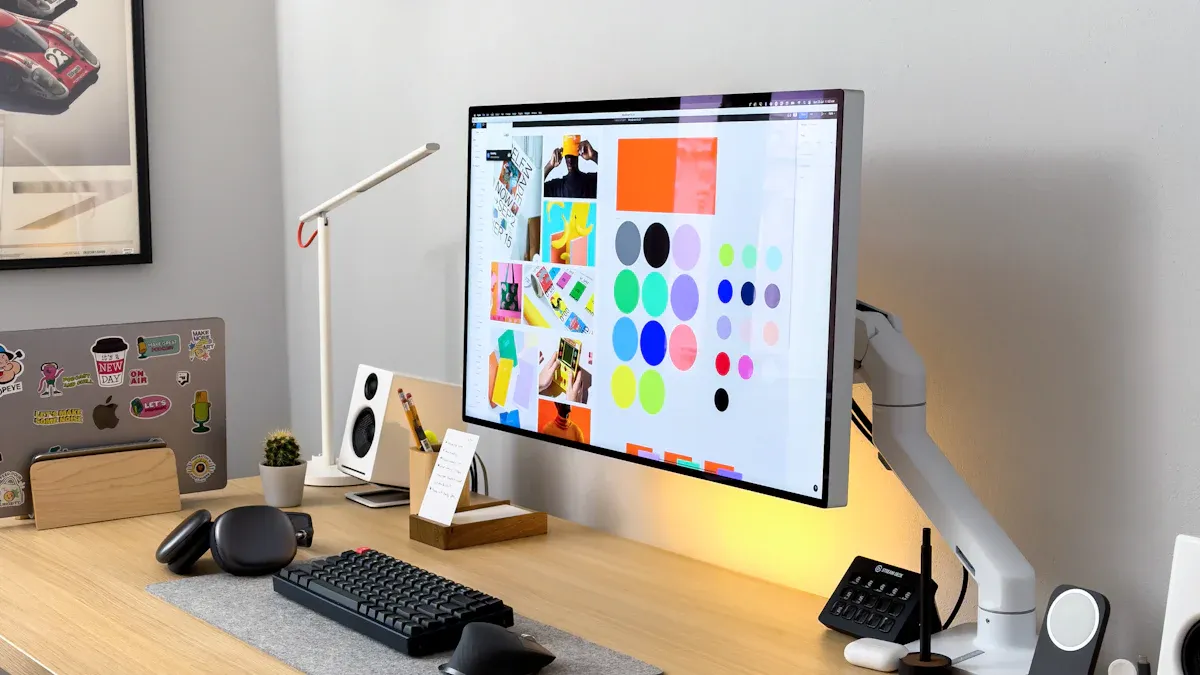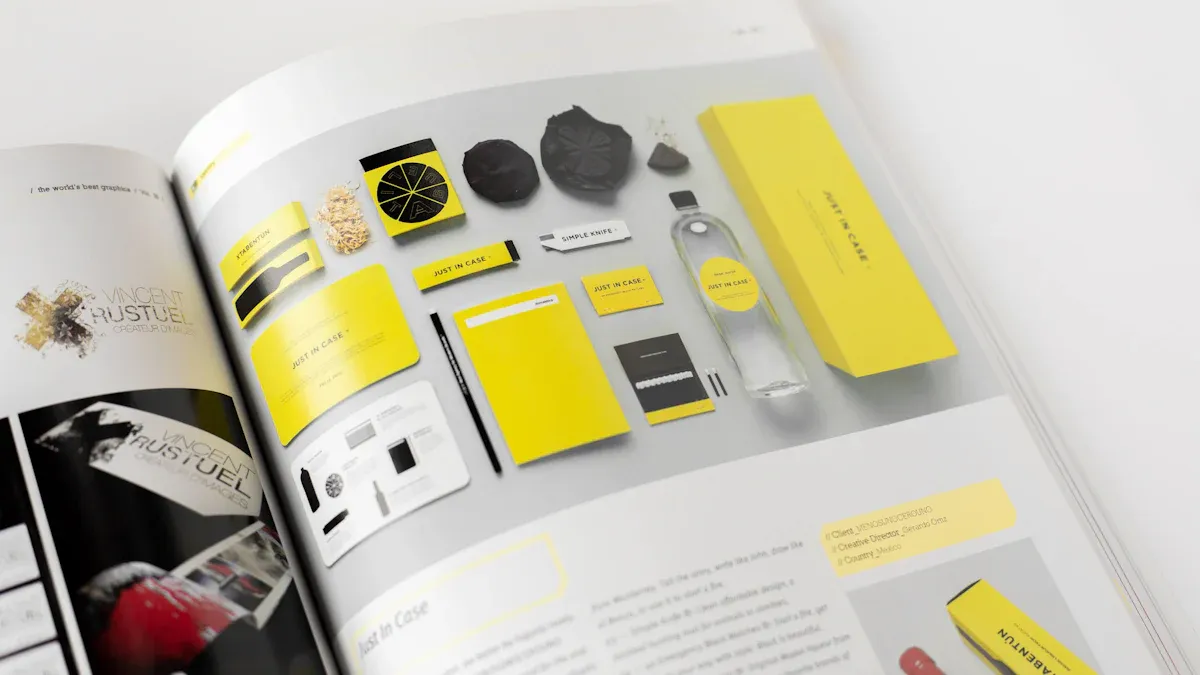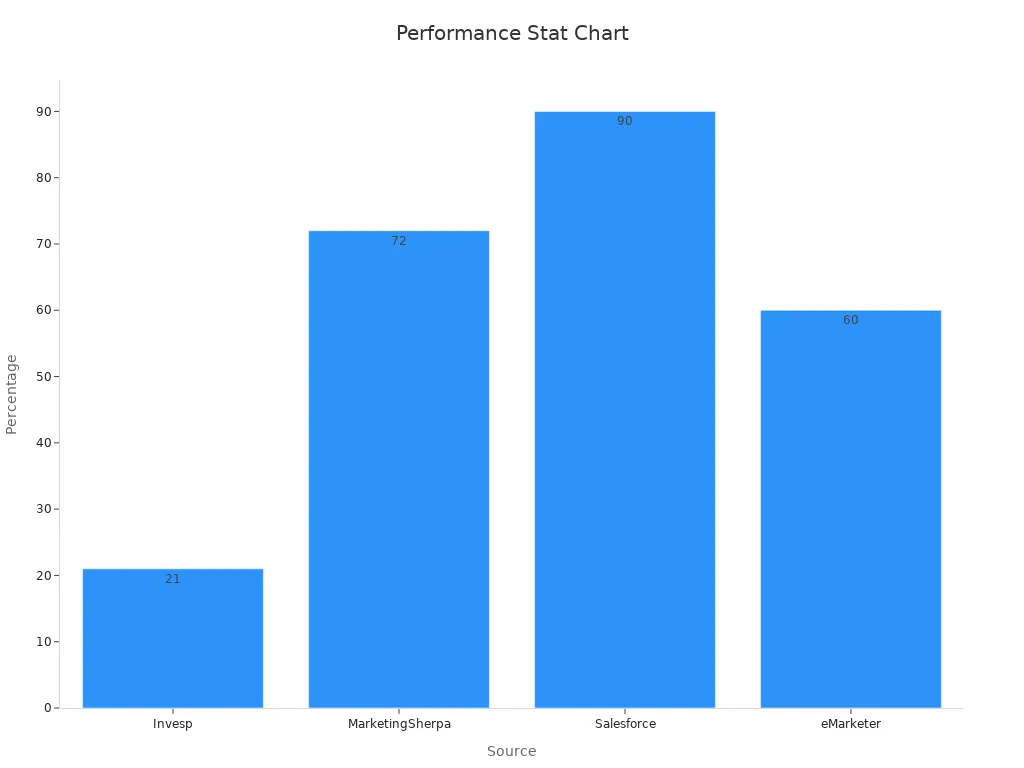Creating a Visual Brand Strategy with brands.menu

A strong visual brand strategy can transform how your audience perceives your business. Visual elements like images, videos, and user-generated content create emotional connections that go beyond words. Did you know that visual content generates 650% more engagement than text-only posts? It also gets shared over 40 times more frequently, making it essential for building a memorable brand.
This is where brands.menu comes in. It simplifies the process of creating a cohesive and engaging visual identity. With its intuitive tools, you can design a strategy that aligns with your goals and resonates with your audience. This blog will guide you through crafting a powerful visual brand strategy using brands.menu.
Key Takeaways
A good visual brand plan helps people see your brand better. It also creates feelings using pictures and videos.
Keeping the same look on websites and social media builds trust. This makes people remember your brand and stay loyal.
brands.menu makes visual branding easy by keeping all tools in one place. It gives templates you can change and lets you update quickly.
Setting clear goals and knowing your audience are key steps to making a strong visual brand plan.
Using brands.menu's data tools helps check how well your brand is doing. It also helps improve your plan so it works better.
Understanding Visual Brand Strategy

Defining Visual Brand Strategy
A visual brand strategy defines how your brand communicates visually with its audience. It includes elements like logos, color palettes, typography, and design features that create recognition. These elements work together to form your brand's visual identity. However, a strong strategy goes beyond just design. It reflects your core values, brand voice, and the emotional connections you want to build with your customers.
Research highlights the importance of a well-defined strategy. Poor visual identity or misalignment with your audience can weaken your brand. A cohesive visual platform ensures your branding aligns with your business goals.
Design influences decisions and actions. It strengthens your brand and increases its value over time.
By focusing on these principles, you can create a strategy that resonates with your audience and supports your brand's growth.
The Role of Visual Communication Touchpoints
Visual communication touchpoints are the places where your audience interacts with your brand visually. These include your website, social media posts, packaging, and advertisements. Each touchpoint contributes to how people perceive your brand. Consistency across these interactions builds trust and enhances recognition.
Studies show that 65% of people are visual learners. This means they process and remember information better when it’s presented visually. Additionally, it takes only 0.05 seconds for someone to form an opinion about your brand. This highlights the importance of using visuals effectively.
Visual branding also triggers emotional responses. It communicates your core values and ensures consistency across channels. For example:
A consistent color palette can evoke specific emotions.
Typography can reflect your brand's personality.
Design elements can create immediate associations with your brand.
By managing these touchpoints strategically, you can create stronger connections with your audience and leave a lasting impression.
Challenges with Traditional Tools
Overreliance on Data Analysis
Traditional branding tools often prioritize data analysis over creative visual development. While metrics like engagement rates and conversion statistics are valuable, they fail to capture the emotional impact of visual elements. You might find yourself focusing too much on numbers and missing opportunities to create a memorable brand identity.
For example, relying solely on performance data can lead to generic designs that lack personality. This approach overlooks the importance of storytelling and emotional connections, which are essential for building a strong visual brand strategy. Data-driven methods also struggle to adapt to the fast-paced changes in consumer preferences, leaving brands disconnected from their audiences.
"The example of Willis the Bear illustrates how supplemental branding strategies can create memorable experiences and foster institutional viability."
By balancing data analysis with creative exploration, you can address these limitations and develop a strategy that resonates with your audience.
Gaps in Addressing Visual Brand Development
Conventional methods often fail to address the complexities of visual brand development. These gaps can result in inconsistencies and misalignment across branding elements. For instance:
Inconsistent branding across universities, leading to confusion.
Limited awareness among internal teams about how to implement the brand effectively.
Visual elements that fail to represent the institution's identity.
Misaligned names and messaging, especially in technology-focused institutions.
Logo designs that don't reflect the essence of higher education.
Color schemes that clash with the organization's vision and mission.
These shortcomings highlight the need for tools that prioritize visual cohesion and emotional resonance. Traditional approaches may deliver results, but integrating unique branding expressions can elevate your strategy.
Creativity and willingness to explore new possibilities are essential.
Understanding audience needs helps identify effective visual elements.
Successful implementation transforms these elements into valuable brand assets.
By addressing these gaps, you can create a visual brand strategy that stands out and builds lasting connections with your audience.
How brands.menu Solves These Challenges
Key Features of brands.menu
brands.menu offers a suite of tools designed to simplify and enhance your visual brand strategy. These features address the gaps left by traditional methods, ensuring you can focus on creativity while maintaining consistency. Here are some of the standout features:
Centralized Visual Assets: All your brand's visual elements, such as logos, color palettes, and typography, are stored in one place. This makes it easy to access and ensures consistency across all platforms.
Customizable Templates: Pre-designed templates help you create professional visuals quickly. You can tailor these templates to match your brand's identity, saving time and effort.
Collaboration Tools: brands.menu allows team members to collaborate seamlessly. Everyone stays aligned, whether they're working on social media posts, packaging, or advertisements.
Real-Time Updates: Any changes to your visual assets are updated instantly across all touchpoints. This ensures your branding remains consistent, even as your strategy evolves.
These features empower you to focus on what matters most—building a strong connection with your audience through a cohesive visual identity.
Tip: Consistency is key. By centralizing your visual assets, you can avoid the pitfalls of mismatched branding and create a more professional image.
Advantages of the Visual Dashboard
The visual dashboard in brands.menu is a game-changer for managing your visual brand strategy. It provides a clear, intuitive interface that helps you track, analyze, and refine your branding efforts. Here's how it stands out:
Dashboard Type | Benefits |
|---|---|
Visualize and interpret customer data, leading to better decision-making and improved satisfaction. |
The dashboard offers real-time visibility into customer interactions and feedback. You can monitor performance metrics and key performance indicators (KPIs) effortlessly. This allows you to identify what works and what needs improvement.
Well-designed visuals in the dashboard do more than just present data. They tell a story, leveraging your brain's ability to process images quickly. This combination of emotional and logical responses makes it easier to interpret data and apply actionable insights.
Additional benefits include:
Measurable Results: You can track the effectiveness of your campaigns using data and analytics.
Cost-Effective Solutions: The platform operates on a pay-per-performance model, ensuring you only pay for results.
Targeted Reach: The dashboard helps you focus on specific demographics, enabling personalized marketing messages.
By using the visual dashboard, you can make informed decisions that align with your goals. This ensures your visual brand strategy remains effective and adaptable in a fast-changing market.
Note: A strong visual dashboard not only enhances your strategy but also saves time by providing actionable insights at a glance.
Step-by-Step Guide to Using brands.menu

Setting Clear Branding Goals
Establishing clear branding goals is the foundation of a successful visual brand strategy. Without defined objectives, your efforts may lack direction and fail to deliver meaningful results. brands.menu simplifies this process by helping you focus on measurable and actionable goals. Here’s how you can set effective branding goals:
Define Specific Objectives: Identify what you want to achieve. For example, you might aim to increase brand awareness or improve customer engagement.
Collect Diverse Data: Use surveys, analytics, and social media metrics to understand your brand’s current performance.
Analyze Trends: Look for patterns in the data that can guide your strategy. For instance, if customers engage more with video content, prioritize creating videos.
Act on Insights: Translate your findings into actionable steps. Adjust your campaigns or refine your messaging to better connect with your audience.
By following these steps, you can align your branding goals with your overall business strategy. For instance, tracking metrics like customer engagement rates and conversion rates can reveal how well your visual elements resonate with your audience. brands.menu’s tools make it easier to monitor these metrics and refine your approach.
Tip: Regularly revisit your goals to ensure they remain relevant as your brand evolves.
Identifying and Defining Visual Touchpoints
Visual touchpoints are the moments where your audience interacts with your brand visually. Identifying and defining these touchpoints ensures consistency and strengthens your brand identity. With brands.menu, you can map and manage these interactions effectively. Follow these steps to get started:
Understand Your Audience: Analyze how customers discover and interact with your brand.
Map the Customer Journey: Outline every interaction, from the first impression to post-purchase experiences.
Highlight Key Touchpoints: Identify the most critical moments, such as your website, social media posts, or product packaging.
Design Engaging Interactions: Ensure each touchpoint reflects your brand values and meets customer expectations.
Integrate Across Channels: Maintain consistency across all platforms to create a cohesive brand experience.
Gather Feedback: Use customer feedback to refine and improve your touchpoints.
Anticipate Future Needs: Stay ahead by evolving your touchpoints to meet changing customer preferences.
For example, a consistent color palette across your website and social media can enhance recognition. Similarly, aligning typography and design elements with your brand’s personality creates a stronger emotional connection. brands.menu’s centralized tools make it easy to manage and update these elements across all channels.
Note: Consistency across touchpoints builds trust and ensures your audience recognizes your brand instantly.
Utilizing brands.menu Features for Strategy Development
brands.menu offers powerful features that streamline the development of your visual brand strategy. These tools help you create a cohesive and impactful brand identity while saving time and effort. Here’s how you can leverage them:
Feature | Benefit |
|---|---|
Centralized Visual Assets | Store and access all your brand elements in one place for consistency. |
Customizable Templates | Quickly create professional visuals tailored to your brand identity. |
Collaboration Tools | Enable seamless teamwork across departments or projects. |
Real-Time Updates | Ensure instant updates across all touchpoints for a unified strategy. |
For example, if your goal is to improve customer engagement, you can use the platform’s analytics to track how your visuals perform. The visual dashboard provides measurable insights, such as conversion rates and customer retention rates, allowing you to refine your strategy. Additionally, the customizable templates save time by providing a starting point for your designs, which you can adapt to match your brand’s unique style.
Tip: Use the real-time updates feature to ensure your branding stays consistent, even as your strategy evolves.
By utilizing these features, you can create a visual brand strategy that aligns with your goals and resonates with your audience. brands.menu empowers you to focus on creativity while ensuring your efforts remain data-driven and effective.
Benefits of a Comprehensive Visual Brand Strategy
Achieving Brand Consistency
Consistency in your visual branding builds trust and recognition. When your audience sees the same colors, logos, and design elements across all platforms, they associate these visuals with your brand. This familiarity fosters loyalty and strengthens your market presence.
A comprehensive strategy ensures that every touchpoint reflects your brand identity. For example, using a centralized platform like brands.menu helps you maintain uniformity across digital and physical channels. Consistent branding also leads to measurable improvements in performance:
Customer loyalty metrics show that connected customers spend more and prefer your brand over competitors.
Customer retention rates increase, boosting lifetime value.
Price premium comparisons reveal that customers are willing to pay more for a well-branded product.
Customer acquisition costs (CAC) decrease as brand recognition grows.
Sales volume analysis highlights the financial benefits of consistent branding.
Consistent visuals create instant recognition, enhancing trust and driving revenue growth.
Building Stronger Connections with Audiences
Visual branding helps you connect with your audience on an emotional level. People process visuals faster than text, making them a powerful tool for communication. Research shows that visuals improve information retention by up to 65% and are processed 60,000 times faster than text.
Evidence Description | Statistic |
|---|---|
Posts with images receive more views | 94% more views |
Video marketing effectiveness | 85% effectiveness |
Visuals generate higher engagement | 650% higher |
By using visuals strategically, you can create memorable experiences that resonate with your audience. For instance, videos and images can tell your brand story in ways that words cannot. This approach not only boosts engagement but also strengthens customer loyalty.
Enhancing Communication Across All Touchpoints
A cohesive visual strategy ensures seamless communication across every interaction. Whether it’s your website, social media, or packaging, consistent visuals create a unified experience. Studies reveal that 90% of consumers expect a consistent experience across all channels, and companies using multi-channel marketing see a 21% increase in revenue.

Delivering high-quality, consistent visuals across touchpoints enhances your brand image. It also improves customer navigation and trust. By integrating channels effectively, you can meet customer expectations and create a cohesive brand experience.
A unified strategy ensures your audience feels connected to your brand, no matter where they interact with it.
A comprehensive visual brand strategy transforms how your audience perceives your business. It builds trust, strengthens connections, and ensures consistency across all touchpoints. brands.menu simplifies this process with tools that centralize assets, streamline collaboration, and provide actionable insights.
Many brands have already seen measurable success. One client reported a 40% increase in sales, while another achieved a 200% return on investment within a year, boosting annual revenue by $1 million. Others experienced a 30% rise in customer retention rates and a 50% higher click-through rate compared to industry benchmarks.
Take the next step in elevating your brand. Explore brands.menu today and unlock the potential of a cohesive visual strategy. Sign up for a free trial to see the difference it can make for your business.
FAQ
What is brands.menu, and how does it help with visual branding?
brands.menu is a platform that simplifies visual brand strategy creation. It centralizes your visual assets, offers customizable templates, and provides real-time updates. These features ensure consistency across all branding touchpoints, saving you time and improving audience engagement.
Can brands.menu be used by small businesses?
Absolutely! brands.menu is designed for businesses of all sizes. Its user-friendly tools and pay-per-performance model make it accessible for small businesses. You can create professional visuals and track results without needing a large budget.
How does brands.menu ensure brand consistency?
brands.menu centralizes your visual assets, such as logos and color palettes. It updates these assets instantly across all platforms. This ensures your branding remains consistent, whether you're creating social media posts, packaging designs, or advertisements.
Is brands.menu suitable for teams?
Yes, brands.menu includes collaboration tools that allow team members to work together seamlessly. Everyone can access the same visual assets and templates, ensuring alignment across projects and departments.
Does brands.menu offer analytics for visual branding?
Yes, brands.menu provides a visual dashboard with analytics. You can track performance metrics like engagement rates and conversion rates. These insights help you refine your strategy and make data-driven decisions.
See Also
Top Tools To Elevate Your Brand Marketing Strategy
Unlock Your Brand's Full Potential Using These Resources
Ten Must-Have Tools For Successful Branding And Marketing
Utilizing Facebook Ad Library For Smart Advertising Research


